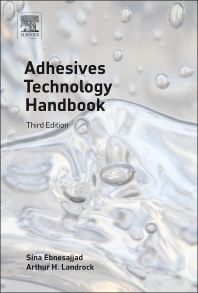Adhesives Create New Value for Society
Asia-Pacific Adhesives Sector Enables Smart, Sustainable 5G World

We are living in a time of unprecedented transformation. Advances in digital technology are reshaping businesses and industries around the globe, and the push for more sustainable alternatives is rewriting the tactical rulebook. As the world’s economic center of gravity shifts eastwards, with so much of its progress reliant on innovating new adhesives and sealants, there has never been a more exciting time to be part of chemical industry as it undergoes transformation, nor is there a better place to be than Asia-Pacific.
Megatrends That Are Creating Value
5G
One of the biggest technological advancements of our time is the emergence of 5G services. Officially launched in 2019, its high-speed connectivity is laying the foundation for artificial intelligence (AI), the Internet of Things (IoT), augmented and virtual reality (AR/VR) and other technologies that transform how people and things interact.
The current wave of 5G deployment in China, South Korea and Japan positions the Asia-Pacific region as the pioneer of the era. Developments like self-driving cars, remote medical treatment and smart manufacturing are already promising to substantially alter our lives. Indeed, Asia-Pacific is the fastest-growing region in the autonomous cars market,1 is the dominant market for mobile “mHealth” technologies with a 45% share of the global total in 2019,2 and is the largest revenue contributor to the global smart factory market.3
Artificial Intelligence
As digitalization sweeps across industries, digital innovation is allowing factories and warehouses to be increasingly more connected, and Artificial intelligence (AI) is critical to the digitalization of manufacturing. According to research from Accenture,4 AI will add approximately 3.7 trillion USD to the manufacturing sector by 2035. For example, consider that with the application of AI in the value chain, large amounts of data are being shared across work sites and companies within the span of only a few milliseconds. Technologies made smarter through the application of AI are undoubtedly injecting vitality into the industry for expansive growth.
The potent combination of AI, 5G and smart platforms are empowering big data to further improve operation intelligence. Analytical capabilities enable machines to start learning, be more efficient in analysing complex big data and allow the system to make decisions. Using a big data approach, computing results facilitate companies to continuously optimize production and evaluate in real-time the impact and value it can create for the customers.
To keep pace with the ongoing transformations of Industry 4.0, Henkel looks to revamp processes across its production sites worldwide with the latest technological advancements. In view of this, Henkel is investing in machine learning to further drive AI applications throughout industrial manufacturing processes. Underpinned by hyper connectivity, Henkel aims to turn plants into smart factories to create more value for its customers.
The Convergence of Digitalization and Sustainability
One major beneficiary of digitalization is the sustainability movement. Data digitalization allows data from resource consumption, waste and emissions to be more easily collected, analyzed and shared. With wider access to data, companies can better identify weak points and reform their processes to be more sustainable. This will help companies comply with increasingly strict regulatory standards, and respond to empowered consumers and NGOs who are demanding greener solutions.
Looking Ahead: Adhesive Solutions Drive Megatrends Forward
This is a transformative time for the adhesives industry, and the products being innovated hold the capability of creating value for everyone. During this time, we have the opportunity to shape innovations to cater to more sustainable processes. To keep up with the fast pace of megatrends like 5G, it is important to create advanced materials that both provide solutions for megatrends and prioritize sustainability.
Adhesive Solutions for 5G
The innovative solutions in the adhesive industry allow the megatrends of our time to become a reality. In order to access the 5G network, vehicles, equipment and consumer devices need to integrate more components within increasingly small spaces. Compact camera modules and sensors, for example, are crucial to the data collection required to enable self-driving processes. In the past two years, the production of miniaturized cameras has doubled to 10 billion units,5 and is supported by innovations such as ultra-thin adhesives that enable components to be as compact as possible without sacrificing precision.
Thermal management is also another important solution in the industry that is allowing 5G to happen. 5G generates a lot of heat with data transmission rates that go up to 100 times faster than existing 4G networks. Innovations in thermal management technologies prevent electronic components from overheating by dissipating heat away from the processor to ensure reliability.
Recyclability
As we shift away from traditional manufacturing towards more technology-driven processes, smart manufacturing is demanding more sophisticated adhesive technologies and solutions. These changes create a window of opportunity to integrate more sustainable practices. For us, this means that improving the recyclability of packaging will continue to be a major priority, especially in the Asia-Pacific market where China and India are projected to account for 70 percent of global packaging growth by 2022.6
The adhesives used in packaging typically make up a small percentage of its total weight, yet their properties profoundly affect the overall recyclability of the material. Henkel’s newly introduced RE range of adhesives and coatings is designed to both improve the recyclability of flexible packaging and make it possible to use recycled material for new packaging.
Added Value of a Circular Economy
Most industries today are built around a linear economic model, where resources are used to make products that are consumed and then thrown away. But our planet’s ecosystems will not survive if this continues. For this reason, it is critical that we take collective action to create a circular economy. In a circular economy, materials are reused, and waste is kept to an absolute minimum. To fulfil this vision of sustainability, massive transformation has to be made in the way products are designed, manufactured, and processed after they’ve been used.
Henkel is actively shaping the future of a circular economy by evolving recycling processes, and proof of this can be found in the Henkel RE adhesives range, designed particularly with recycling in mind. The RE range is able to effectively bond multiple compatible layers which is central to achieving optimal results in different recycling processes. Henkel also openly shares its knowledge on sustainable packaging and circular economy with its partners. Working together, Henkel and its partners enable companies to go circular by providing innovative solutions for closed-loop value chains.
Challenges to Future Growth
The coming year onwards is expected to present challenges for the advanced materials industry. A decelerating global car market and a predicted slowdown in semiconductor production suggests that many sectors are struggling for growth amidst a sluggish world economy.
The COVID-19 pandemic only further compounds the economic challenges present in the materials industry. Early on, the outbreak raised questions of economic impact as the control and prevention measures were affecting China. Since COVID-19 quickly spread across the globe, supply chain and economic activity worldwide have been abruptly disrupted. The decreased movement of parts and products, first in China and now globally, is expected to have an enduring, negative economic impact across a vast majority of industries. As stated by the IMF, under any scenario, global growth in 2020 will drop below last year's level which was 2.9 percent. It is difficult to predict at this point to what extent COVID-19 will affect business, as it also depends on the measures taken to respond and how effective they will be.7
The disruption to supply chain due to measures to contain COVID-19 has prompted companies to consider ways of developing supply chain resilience so that they can be better prepared for potential disruptors in the future. For companies to be more resilient, they should consider diversifying their supply chain, and providing a boost to those who advocate onshoring or nearshoring.
Asia-Pacific and China to Drive Growth
Despite the challenges, Asia-Pacific remains as a region of great importance to the adhesives industry. The proliferation of 5G networks and IoT devices in this region has massive growth potential, and enterprises and industries here are leading the way in digital transformation to take advantage of AI, AR/VR and other breakthroughs.
In Asia-Pacific, China is the largest market for adhesives and sealants. This is attributed to the market’s large consumption in the construction, packaging, electronics, and automotive industries. It’s also no wonder that China has the largest packaging industry in the region. Production here to support the demands of the international market is major contributor to the large volume of consumption of adhesives and sealants. And consumption is only expected to grow, owing to the projected increase of packaged goods, especially in the food and beverage industry.
In the adhesives industry, by some accounts, multinational companies will continue to stay committed to their long-term investment in China and remain confident in their strategy to innovate and develop in the market. In the long-term, foreign investment will not likely change, and China is expected to withstand these trialing times to continue to be a hotspot for investment from global enterprises.8
Henkel as a Key Player
Henkel is leading today’s markets with its adhesives, sealants, and functional coating, and continues to drive the chemicals industry forward through innovation. Particularly in the Asia-Pacific region, Henkel continues to invest in innovation and production. If any indication of this, the company opened a Thermal Management Materials Joint Development Lab in Shanghai in October 2019 to spearhead adhesive development, application validation and simulation, and raw materials scouting for global markets. What’s more, in February 2020, Henkel opened a US$54 million smart factory near Pune, India, to support customers with flexible packaging, construction equipment and the automotive parts, to name a few. Henkel is also investing US$38 million to build a smart factory in Songdo, Korea to support the development of the global electronics industry.
There is no doubt that mobility, sustainability and the rise of smart manufacturing will continue to reshape the global industrial landscape and stimulate economic growth. Chemical companies can innovate breakthrough solutions by banding together with industry peers, customers, regulators and other stakeholders. Through collaboration, the current and future advancements in the chemicals industry can truly create sustainable value for all societies in this era of transformation.
1 Autonomous Cars Market, By Level of Autonomy, By Type, By Components, By Region, Trend Analysis, Competitive Market Share and Forecast, 2015-2025, Research And Markets, 2019
2 mHealth Market Size, Share & Trends Analysis Report By Component (Wearables, mHealth Apps), By Service (Monitoring, Diagnosis), By Participant (Mobile Operators, Device Vendors), By Region, And Segment Forecasts, 2020 – 2027, Grand View Research, 2020
3 Smart Factory Market to Remain Profitable Through 2028; IoT and Predictive Analytics Real Impetus for Market Expansion, Future Market Insights, 2018
4 Manufacturing the Future, Accenture, 2018
5 Transforming Our Lives at High Speed, Henkel, 2019
6 Packaging Solutions Poised to take off? McKinsey & Company, May 2019
7 Transcript of IMF Press Briefing, International Monetary Fund, March 2020
8 Online Regular Press Conference of the Ministry of Commerce, Ministry of Commerce People’s Republic of China, March 2020
Looking for a reprint of this article?
From high-res PDFs to custom plaques, order your copy today!










